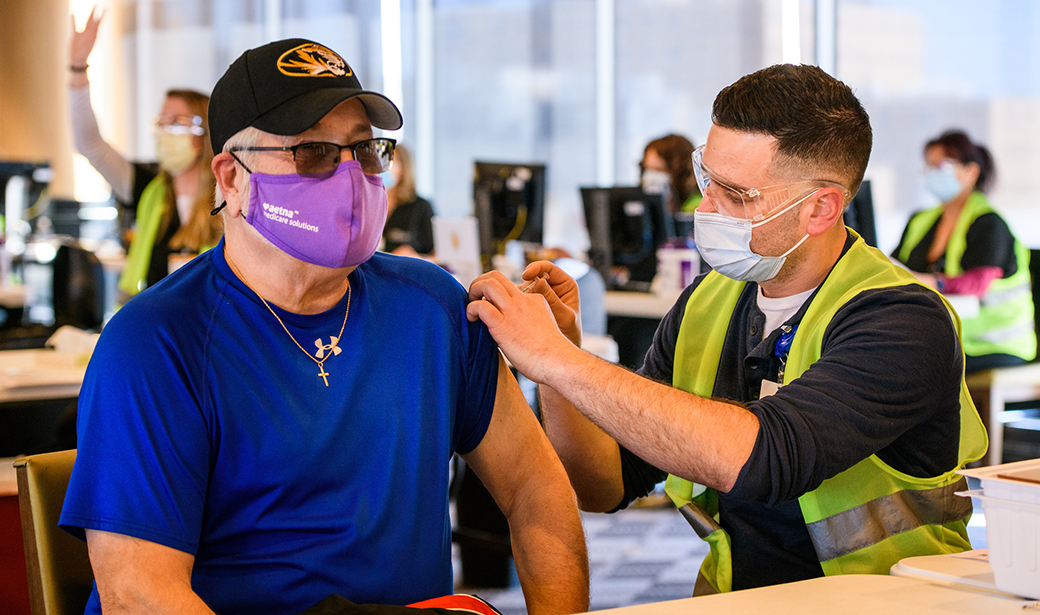One of the reasons some people haven’t signed up to receive the COVID-19 vaccine is that they’re worried there might be unknown side effects that will show up months or years later.
Although it’s true there are still a lot of things we’re learning about the vaccines — like how effective they are against variants and how long their protection lasts — there are plenty of things we do know that give experts confidence in the long-term safety of the vaccines.
History tells us that severe side effects are extremely rare, and if they do occur, they usually happen within the first two months.
The most recent example of this phenomenon is the Johnson & Johnson COVID-19 vaccine. The vaccine was put on pause when health officials learned that a small number of people who received the vaccine experienced a serious blood clotting problem.
About 7.4 million Americans had received the Johnson & Johnson vaccine when regulators paused its administration to investigate a handful of cases in which people had blood clots. All of the cases emerged within two weeks of vaccination.
Upon reviewing information about the cases, federal health officials determined that the benefits of the vaccine outweighed the risk, and they approved resumed use of the vaccine.
This is how the system is designed to work if unexpected side effects emerge.
History shows this is a common pattern. When new vaccines are released, the unknown side effects, if any, show up within two months of vaccination. This history goes back to at least the 1960s with the oral polio vaccine and examples continue through today.
Because of this, scientists and public health officials continually monitor vaccine data before, during and after a vaccine becomes available to the public.
COVID-19 vaccine technologies have been studied for years and used in other treatments without issue.
mRNA vaccines. The vaccines made by Moderna and Pfizer-BioNTech use messenger RNA, or mRNA, to deliver a message to your immune system with instructions on how to fight the coronavirus infection.
Researchers have been studying and working with mRNA vaccines for decades. mRNA vaccines have been studied before for influenza, Zika and rabies. Beyond vaccines, cancer research has used mRNA to trigger the immune system to target specific cancer cells. Learn more about how mRNA vaccines work.
Adenovector vaccines. Viral vector vaccines use a modified version of a different virus (the vector) to deliver instructions that teach cells how to fight the coronavirus infection. In the case of the COVID-19 case, it’s the adenovirus, a common virus that causes colds or flu-like symptoms. However, the adenovirus was modified so it can enter cells but can’t replicate or cause illness.
Scientists began creating viral vectors in the 1970s, and they have been studied for gene therapy and cancer treatment. Some vaccines recently used for Ebola outbreaks have used viral vector technology, and studies have focused on viral vector vaccines against other infectious diseases such as Zika, influenza and HIV. Learn more about how the Johnson & Johnson vaccine works.
Protein subunit vaccine. The Novavax vaccine uses a protein — in this case, a harmless piece of the COVID-19 spike protein — to alert your immune system to recognize and fight back against the real COVID-19 virus. It also includes an adjuvant, which is a substance that boosts the level of immune response. It is the same approach that has been used for decades in the vaccines for influenza, hepatitis B and HPV.
The vaccine development process, from clinical trials to ongoing monitoring, helps to uncover and understand side effects.
Clinical trials are a key part of vaccine development and involve evaluating use in tens of thousands of study participants. All of the COVID-19 vaccines went through this rigorous process before authorization.
In reviewing results from the trials, the federal Food and Drug Administration must determine that the known and potential benefits outweigh the known and potential risks of the vaccine.
After vaccines are authorized and in use by the public, public health officials continue monitoring the data as an additional safety measure. Manufacturers must have a plan to report follow-up data, including any events such as hospitalizations and deaths, and they must continue research to generate more data on safety and efficacy. Learn more about FDA emergency use authorization.



